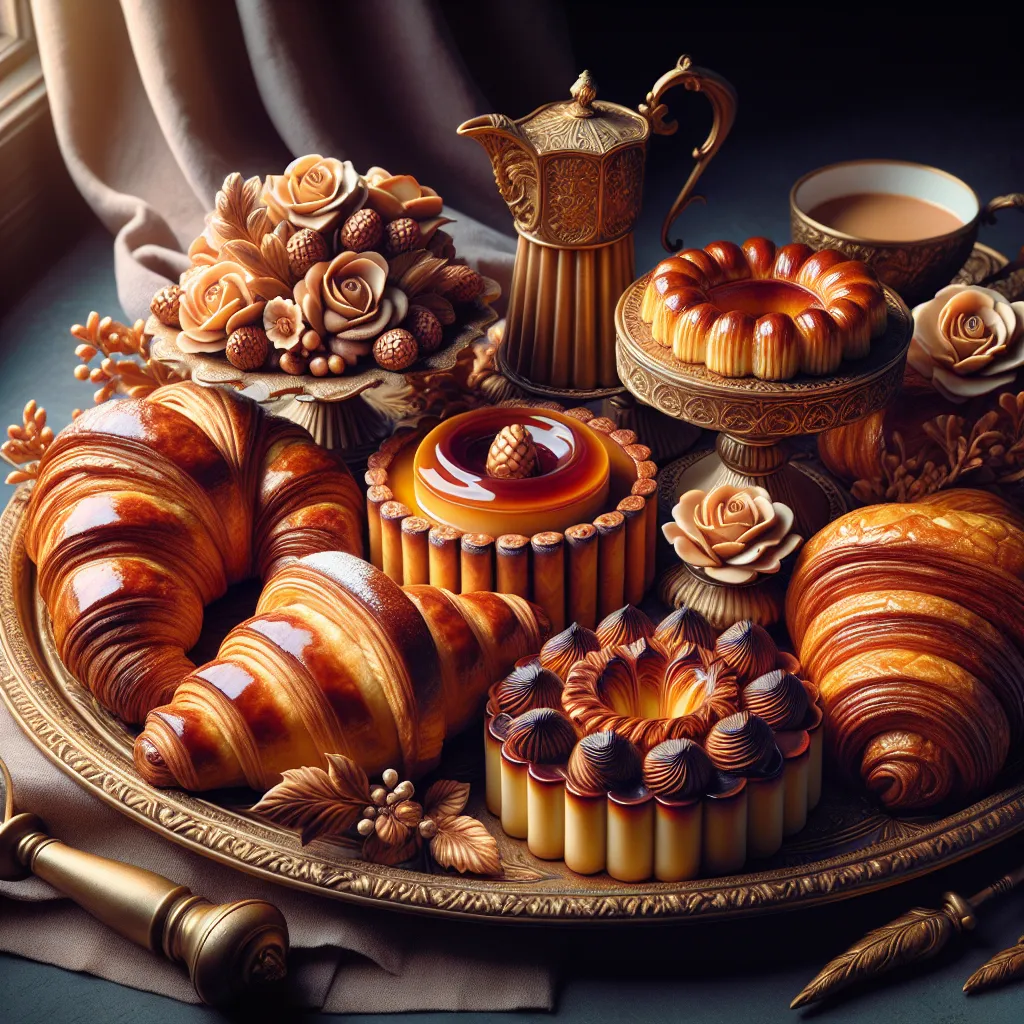The Origins of Traditional French Pastry Recipes
When exploring traditional French pastry recipes, it’s essential to delve into the rich and diverse origins of these delectable treats. The roots of traditional French pastries can be traced back centuries, with influences from various regions and historical periods shaping the recipes we cherish today. From the buttery layers of a croissant to the caramelized perfection of a Tarte Tatin, each pastry tells a story of culinary evolution and innovation.
French pastry recipes have been influenced by historical events, such as the introduction of sugar during the Crusades, as well as the culinary traditions of the many regions of France. For example, the croissant, with its flaky texture and crescent shape, is believed to have originated in Vienna before becoming a staple of French breakfasts. Meanwhile, the Tarte Tatin, a sumptuous upside-down apple tart, has its origins in the Loire Valley, where the Tatin sisters created this iconic dessert by accident in the 19th century.
Furthermore, the expertise of French pastry chefs has been honed over generations, with techniques and recipes passed down through prestigious culinary schools and family traditions. This dedication to preserving and innovating upon traditional recipes has ensured that French pastries remain an integral part of the country’s cultural and gastronomic identity.
As we explore traditional French pastry recipes, we unravel a rich tapestry of history, culture, and culinary craftsmanship. Each bite of a classic French pastry represents a centuries-old tradition, a testament to the enduring artistry of French patisserie.
Mastering the Art of Making Flaky Croissants
Mastering the art of making flaky croissants is a true test of skill and patience in the world of traditional French pastry. The process of creating these delicate, buttery pastries is a labor of love that requires attention to detail and a commitment to precision. The key to achieving the perfect flakiness lies in the technique of layering the dough with butter, a method known as lamination. This process involves folding and rolling the dough multiple times to create thin layers that result in the characteristic flakiness of croissants.
One of the foundational elements of crafting authentic croissants is using high-quality butter with a high fat content. The butter is carefully encased within the layers of dough, and when baked, it creates steam that separates the layers, resulting in the iconic airy texture. Additionally, the dough itself is a crucial component and is typically made with flour, water, yeast, sugar, and salt, using a technique that allows for the development of gluten to give the croissants structure.
Temperature control is another critical factor in the process, as the dough must be kept at the right temperature to ensure that the butter remains firm, allowing for optimal layering. The intricate balance of timing, temperature, and technique is essential to achieve the desired result.
While the process of making traditional French croissants may seem daunting, the satisfaction of mastering this art and experiencing the delightful aroma and taste of freshly baked, flaky croissants makes the effort truly worthwhile.
Decadent Delights: Tarte Tatin and Other French Desserts
When it comes to traditional French pastry recipes, one cannot overlook the decadent delights that are deeply rooted in the culture of France. Tarte Tatin, a classic French dessert, is a prime example of an exquisite pastry that has stood the test of time. This upside-down caramelized fruit tart, typically made with apples, embodies the essence of French baking with its rich history and irresistible flavors.
In addition to Tarte Tatin, French pastry recipes encompass an array of other tantalizing desserts such as Crème Brûlée, Profiteroles, and Mille-Feuille. Each of these delicacies showcases the mastery of French pastry chefs in creating desserts that are not only visually stunning but also a symphony of taste and texture.
Exploring these traditional French pastry recipes unveils the meticulous techniques and attention to detail that are integral to French baking. From the precise lamination of butter in croissants to the precise assembly of layers in a Mille-Feuille, every step in the process is a testament to the dedication and artistry of French pastry making.
Whether it’s the buttery flakiness of a croissant or the caramelized perfection of a Tarte Tatin, traditional French pastry recipes continue to captivate the senses and inspire pastry enthusiasts around the world, inviting them to savor the unparalleled indulgence of French desserts.
Exploring the Timeless Charm of French Patisserie
Exploring the timeless charm of French patisserie is a delightful journey into the heart of traditional French pastry recipes. From the flaky, buttery perfection of croissants to the rich, caramelized allure of Tarte Tatin, these iconic delicacies encapsulate the essence of French culinary artistry.
French patisserie, with its meticulously crafted pastries and desserts, has long been celebrated for its exquisite flavors and elegant presentation. Each delicacy tells a story of centuries-old techniques and time-honored recipes, passed down through generations of pastry chefs.
One cannot help but be enamored by the precision and dedication that goes into creating these delectable treats. The delicate layers of a Mille-Feuille, the creamy indulgence of a classic Éclair, or the almond-infused perfection of a Frangipane tart – each confection is a testament to the artistry and craftsmanship of French patisserie.
Exploring traditional French pastry recipes offers a glimpse into a world where every bite is a symphony of flavors and textures, carefully orchestrated to delight the senses. It’s a world where the simple act of savoring a macaron or a madeleine becomes an unforgettable experience, leaving an indelible impression on the palate.
In essence, the timeless charm of French patisserie lies in its ability to transport us to a place where the art of baking is elevated to a form of edible poetry. It’s a celebration of tradition, creativity, and passion, all encapsulated within the heavenly creations that have come to define the world of French pastry.

